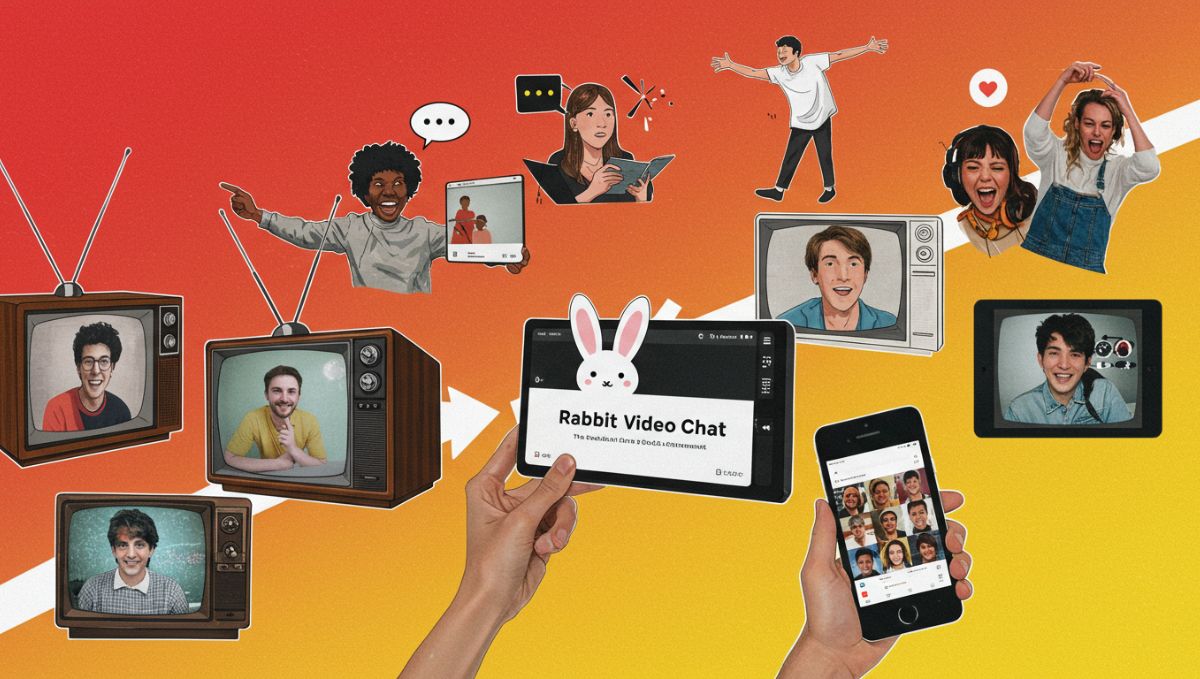Rabbit Video Chat, commonly known as Rabbit, was a revolutionary platform that allowed users to watch videos together in real time, no matter where they were in the world. Launched in 2013, Rabbit quickly gained popularity for offering a social viewing experience unlike anything else at the time. It merged video conferencing with shared streaming, creating virtual rooms where friends could chat, watch movies, browse the web, or listen to music simultaneously.
Although the original Rabbit platform shut down in 2019, its concept has deeply influenced how we experience content socially online. Many other platforms have since emerged to carry forward the idea that Rabbit popularized.
Key Features of Rabbit Video Chat
1. Shared Viewing Rooms
Rabbit allowed users to create private or public rooms where they could invite friends or meet new people to co-watch videos. These rooms supported up to 100 participants and included a shared browser.
2. Integrated Video Chat and Text Chat
Unlike basic chat rooms, Rabbit featured live video and audio chat, making the experience feel more personal and engaging. Users could see and talk to each other while watching content.
3. Universal Content Access
With Rabbit’s built-in virtual machine, users could stream from almost any website—Netflix, YouTube, Hulu, or even browse the web. Everyone in the room saw the same thing at the same time, with synchronized playback.
4. Cross-Platform Availability
Rabbit was accessible via web browsers and had dedicated iOS and Android apps, making it easy for users to connect on the go.
Why Rabbit Video Chat Was So Popular
The Social Element of Streaming
Rabbit turned solo screen time into a shared event. It was especially popular among long-distance couples, remote friends, and even online communities looking for a space to connect over shared interests.
A Unique Entertainment Experience
Unlike traditional video conferencing or simple streaming services, Rabbit created a virtual living room where the social and entertainment elements blended seamlessly.
Perfect for Events and Watch Parties
From virtual birthdays to movie marathons, Rabbit became a go-to platform for group events—especially during periods of social distancing and global lockdowns.
The Downfall and Closure of Rabbit
In July 2019, Rabbit suddenly shut down. The reasons behind its closure included:
-
Financial struggles – Despite its popularity, Rabbit struggled to secure sustainable revenue.
-
Server and infrastructure costs – Operating shared virtual machines for thousands of users daily required substantial investment.
-
Failed acquisition deal – Rabbit was in talks for acquisition, but the deal fell through, leading to the sudden shutdown.
After its closure, Cast (formerly known as “Airtime”) acquired Rabbit’s intellectual property and tried to replicate the experience with their spin.
Alternatives to Rabbit Video Chat Today
Though Rabbit is no longer active, its legacy lives on in several modern platforms:
1. Teleparty (formerly Netflix Party)
A browser extension that allows synchronized streaming of Netflix, Disney+, Hulu, and more, along with group chat.
2. Discord
Originally designed for gamers, Discord now supports screen sharing and streaming, making it a popular Rabbit alternative for groups.
3. Kast
This is the spiritual successor to Rabbit, offering virtual rooms with video sharing, text chat, and a shared browser-like experience.
4. Watch2Gether
Enables group viewing of YouTube, Vimeo, Twitch, and other platforms with a built-in chat system.
5. Metastream
A browser-based alternative that supports synchronized video playback across various sites and includes chat features.
How Rabbit Influenced Today’s Digital Hangouts
Rabbit’s model of combining social interaction with content sharing laid the foundation for how we engage digitally today. Key impacts include:
-
Virtual watch parties becoming mainstream
-
The integration of chat features into streaming platforms
-
Growing demand for remote social experiences
-
Tools that support long-distance communication through entertainment
Platforms like Zoom, Twitch, and YouTube Live also reflect aspects of what Rabbit pioneered—real-time interaction layered over shared media consumption.
Future of Social Streaming: What Comes Next?
With the rise of metaverse concepts and virtual reality, the idea of shared digital experiences is expanding. Expect future platforms to:
-
Incorporate immersive 3D environments
-
Add avatars and gesture-based communication
-
Offer subscription-free shared viewing
-
Focus on privacy and customizable rooms
The closure of Rabbit marked the end of an era, but it also inspired the next generation of social apps aiming to reconnect people across screens.
Conclusion
Rabbit Video Chat changed how we think about watching content online. It transformed the solo nature of streaming into a shared, emotionally connected experience, enabling real-time interactions regardless of geography.
While the original platform is no longer operational, its vision remains deeply embedded in today’s digital culture. Whether through Kast, Discord, or new platforms yet to emerge, the spirit of Rabbit lives on—bringing people together through the simple act of watching something, together.
